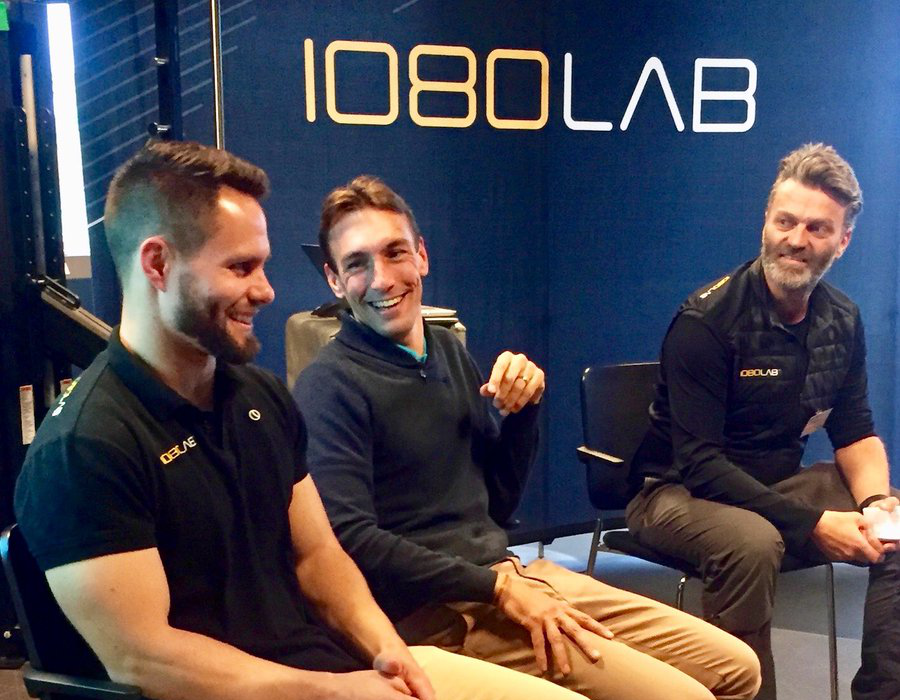1080 Motion recently hosted their annual Summit in Gothenburg, Sweden. Attendees from across Europe, the United States, the Caribbean, the Middle East and Asia participated in lectures and demonstrations from coaches and clinicians pushing the limits of sports science with 1080.
J-B Morin and Cameron Josse presented on their research and training with resisted sprinting and the force-velocity profile. “Everyone thinks we’re the heavy-sled sprinting people,” Josse said as he explained the importance of recognizing the training context – sport, desired output, individual F-v profile – in choosing the right tools and methods to train.
John Bowskill explained his methodology for determining the appropriate multi-planar loading for his patients. His “120% solution” ensures patients recover with greater resilience and injury resistance than they may have had before the injury that brought them to the Bowskill Clinic.
Here are some take-home quotes from these presentations.
J-B Morin: What force at what speed?
Too often we mistake “force” for “maximum force.” When the question is “does this athlete have force? Is he strong?” I think the related question should be “What speed are we talking about?” Many coaches know that good athletes in the low speed context are not good athletes in the high speed context. The question is not “does force lead to speed?” the question is “what force can my athlete produce at speed?”
If I have a force deficit to fix, then the training program is not very complicated: heavy weights, low reps, high force. But how do I fix a velocity issue? This is the F-v curve in the vertical direction, 1RM is close to the Fmax. But squat jump is exactly in the middle of the spectrum, so by definition if you want to work on the right side of the axis you have to work at something less than body weight, because body weight is already too much.
If you have low-level people or beginners, whatever you do will result in higher jump performance. You can train them anyhow. But when you have higher-level people plateauing you have to dig deeper into what they are missing. We had some crazy results with professional rugby players. They were plateauing in jumping, we targeted some assisted jumps because they needed it and boom, they improved their jumps.
[av_button_big label=’More 1080 Sprint research’ description_pos=’below’ link=’manually,http://’ link_target=” icon_select=’no’ icon=’ue800′ font=’entypo-fontello’ custom_font=’#ffffff’ color=’theme-color’ custom_bg=’#444444′ color_hover=’theme-color-subtle’ custom_bg_hover=’#444444′ av_uid=’av-174x5p4′]
20-meter sprint kinetics for basketball testing and training
[/av_button_big]
I don’t want my interpretation of my athletes to depend on the distance tested. That is why the profile is a single test at every possible distance.
Cameron Josse: Force-velocity profiling and resisted sprinting in American football training
During an unloaded sprint, you reach max power within 1 second. By adding resistance we’re taking the environment and spreading it out a little bit more – giving them a little more exposure to that maximum power environment.
Why would we use resisted sprints? I say it’s a no-brainer. It’s a specialized strength exercise for sprinting. How much more specific can you get if you’re talking about resistance training? You either run up a hill against gravity, or you apply resistance.
[American football players preparing for the combine] have to work on a lot of different factors… They have to work on upper body power, strength, their size and how they look because they have to pass an eyeball test so we have to do some hypertrophy. This whole period where they audition to become a pro football player has nothing to do with football. It’s very strange, but it is what it is.
Longer accelerations with light resisted loads, 2-10 kilograms, might improve force at that specific velocity. But what I think it helps with is tactile feedback in an upright sprinting position. They will be higher than they could be with heavy loads, but still not fully upright. Teaching them they still need to put force into the ground and shouldn’t over-stride, things like that. From a technical standpoint it puts them into a good position where they feel it with me having to coach it.
Jon Bowskill and the 120% solution
In elite sport, maybe its 105%. But in the orthopedic cases that come to us, people not necessarily with a conditioning background and not necessarily with any kind of exposure to exercise. The stages that have led to them being injured mean they were pretty weak and dysfunctional before they were injured. Our goal in how we create our programs is to think about how we can increase that buffer to make them more anit-fragile. We use this 120% model to say that we would like to get you back to 120% of where you were before you were injured.
Standing relatively reduces discal pressure but increases need for balance and stabiliity against the load. Sitting can help retrain adaptive postures for lordosis so it’s much easier to retrain lordotic position on somebody sitting than standing because there is less postural sway. Split squat helps to stabilize the pelvis mechanically and a kneeling position is a regression of the squat pattern.
[av_button_big label=’Next Post’ description_pos=’below’ link=’manually,https://1080motion.com/sports-data-ryan-smyth/’ link_target=” icon_select=’no’ icon=’ue800′ font=’entypo-fontello’ custom_font=’#ffffff’ color=’theme-color’ custom_bg=’#444444′ color_hover=’theme-color-subtle’ custom_bg_hover=’#444444′ av_uid=’av-vtdy48′]
Sports data making up lost ground on the technology that produces it
[/av_button_big]
Graded effort can be used within each repetition to set and improve confidence. We can have somebody in a bending pattern with 2-3 kilograms per load and they can be working at 2-3 kilos, and once they get into a more confident range they can start pulling and exerting force against a set speed. We can then measure and test how they progress based upon how much force they could produce early in the movement. We use that to build confidence and show people progressions based on objective data.






























































